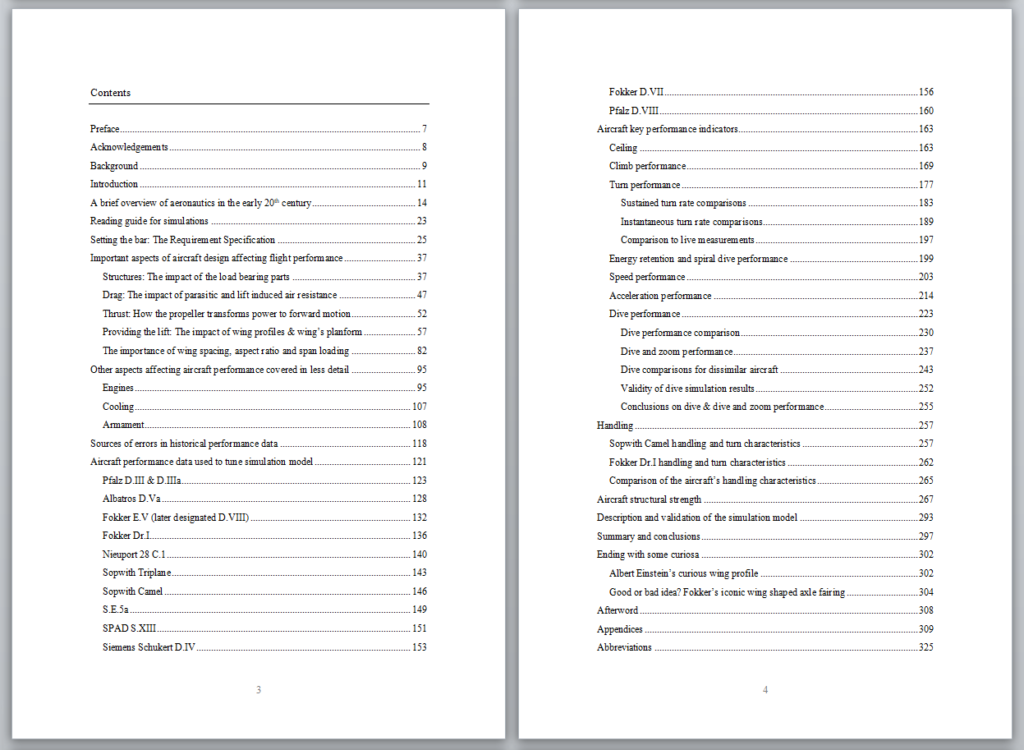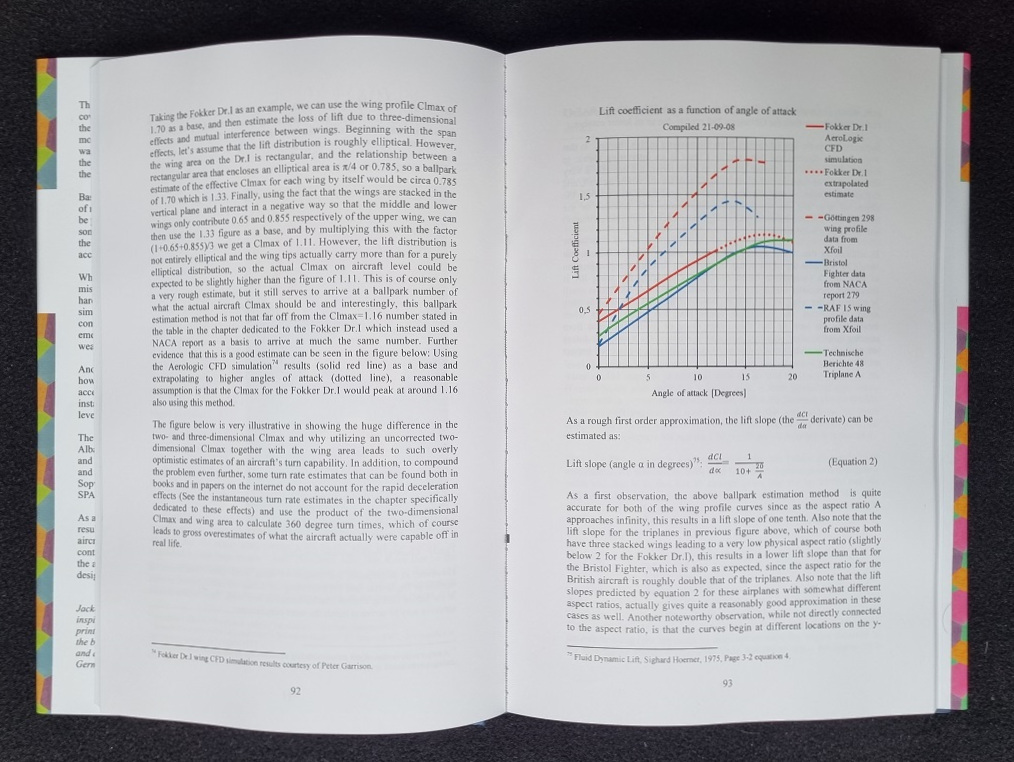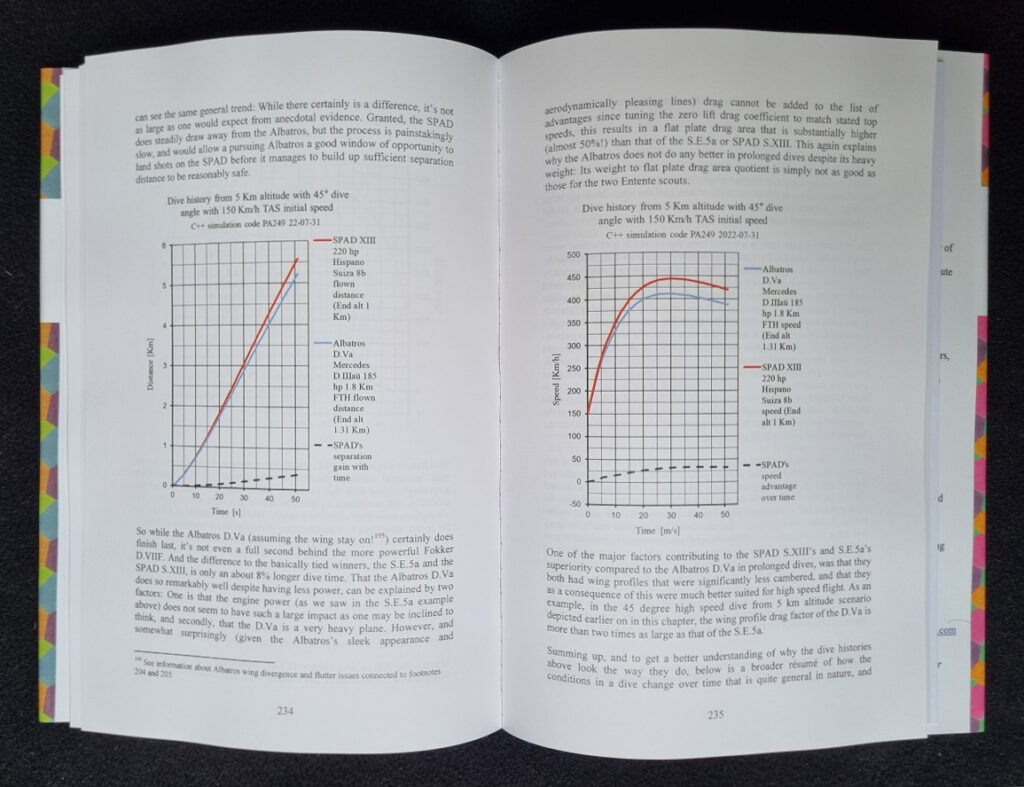WW1 Aircraft Performance book
This is the first book to comprehensively cover WW1 fighter aircraft focusing on their relative flight performance utilizing modern computer simulations. Based on the simulation results, a number of myths surrounding the modelled aircraft can be put to rest and in addition, they reveal some unexpected results that go against the grain of what has become generally accepted facts about these airplanes.
While anecdotal evidence runs the risk of misremembering and embellishments, hard numbers based on computer simulations are more neutral and allow a more complete picture of these aircraft to emerge revealing their true strengths and weaknesses. Another first is the detailed analysis of how the aircraft compare in terms of acceleration, dive, and sustained and instantaneous turn performance done to a level previously not attempted in a book.
The aircraft covered in this book are the Albatros D.Va, Fokker Dr.I, D.VIIF, E.V and D.VIII, Nieuport 28.C1, Pfalz D.IIIa and D.VIII, Siemens Schukert D.IV, Sopwith Camel and Triplane, S.E.5a and SPAD XIII. As a background to the analysis of the results and the rationale for how the aircraft were modelled, the book also contains a brief summary of the state of the art in aerodynamics and aircraft design at the time.
The book is in US trade format (6″ x 9″) and totals about 330 pages. While the book is available for purchase via a number of different sites such as Amazon and Ingram etc., when I order books for personal distribution, I order them directly from the publisher Lulu Press Inc. which can be accessed here:
WW1 Aircraft Performance, Anders F Jonsson, ISBN 9789198774801






Addendum and erratum
The BMW IIIa power should not be assumed to be constant up to the FTH as it is currently portrayed in the book. Should be more according to Dechamps & Kutzbach’s test figures for the engine where there is more of a smooth transition to the high altitude throttle setting. This will “round off” both the climb, and speed curves for the Fokker D.VIIF at the 2.1 km altitude as portrayed in the book.
The Mercedes D.IIIaü power estimates in the book are on the optimistic side, meaning that the performance numbers connected to this in the book need to be updated.
It may be so that the upper wingspan estimate on Fokker D.VII should be increased from 8.76 to 8.9 m since measurements of captured specimens stated 8.9 m. However, the German Baubeschribung states 8.67 m. In addition, the current weight estimate in book (903 kg) may be high, since there are indications that a more appropriate T/O weight would be 880 kg. Both issues TBD.
When it comes to the Nieuport 28 C.1 there is conflicting information regarding the weight: Some sources state a T/O weight of 698 and others 735 kg. In the first edition of the book, I have assumed the lower number but this was probably for the one-gun variant and for an aircraft equipped with two Vickers MG’s, the weight should probably be 735 kg which will of course affect both the estimated climb and turn performance.